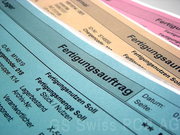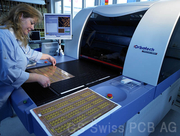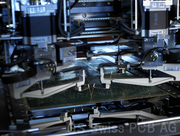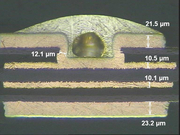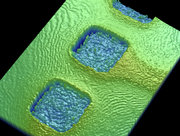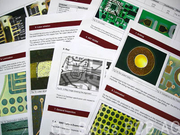We use cookies in order to optimize your user experience. Several cookies are necessary to
operate the site, while others are used for statistical purposes, to provide user-friendly
settings, or to display personalized content. You can decide for yourself which cookies you
wish to allow. Please note that some of the site’s functions may be unavailable as a result
of your settings. You can find further information in our data privacy statement.
Show details
Reliability
For many of our products – especially implantable devices – failure during operation is not an option. In addition, PCBs with hidden defects will cause high costs in the subsequent process chain. GS Swiss PCB AG attaches great importance to QA to ensure that only PCBs that meet your quality requirements are delivered. PCBs will be inspected according to IPC 600 class 2 or pursuant to customer specifications. The quality management system is certified according to ISO 9001 and fully integrated in the ERP system.
Design for Manufacturing (DFM)
During quoting, the design undergoes a first design for manufacturability check. Advisable improvements are undertaken in consultation with our clients. Prior to production, the manufacturing files are submitted to the customer for sign off. Necessary or advisable changes in the build up or the layout are realized only with the consent of the customer.
Manufacturing Documents and Product Specification
Change control is realized by issuing a unique identification number for every revision of a given PCB and all product specifications, drawings and fabrication documents are referenced to this number.
Additionally, PCBs with difficult requirements are labeled “Golden Board” and during production of the prototype all production parameters of each manufacturing step are meticulously recorded. This ensures that subsequent production lots will be manufactured exactly the same way (Golden Board). Changes are only implemented in collaboration with the customer.
Automatic Optical Inspection (AOI)
All layers are subject to a 100 % automatic optical inspection. This test ensures that tracks will have the required dimensions (e.g. local nicks of tracks) and will match the required pattern. The metal pattern is compared to the original Gerber data and the pattern is not learned from an initial board.
E-Testing
All PCBs undergo an electrical test at the end of the manufacturing process. In addition to the usual open and short tests, high impedance, leakage current, capacitive and inducativ load as well as high voltage testing can be offered.
Usually flying probe testers are used. Our e-test equipment possesses automatic optical registration and soft touch needles that leave no marks on the contact pads which is especially important for bond pads.
Microsection
Microsections are important because not all errors can be readily assessed with AOI and e-test. Those hidden defects may show up during assembly or even as field failures.
All plating steps are tested according to IPC TM 650, procedure 2.6.8. The test strip is stressed in liquid solder at 288˚ C (536 F) for ten seconds and then prepared, polished and examined under the microscope. Care is taken during polishing to avoid the smearing of copper which can hide hairline cracks.
3D and Coordinate Measurement
Dimensional accuracy is of high importance for all PCBs but with ever shrinking geometries and complex outlines calipers are unable to fulfill the requirements. An automatic CCD camera powered coordinate measurement system is used at GS Swiss PCB to measure outlines, bond pads, trace width and other important geometrical features and SPC control charts are obtained to tweak the manufacturing process. Moreover, a 3D measurement head using white light refraction interferometry is used to measure flip chip openings (as seen in the picture to the left), pad and line shapes as well as the planarity of flip chip pads within a view angle of 20 x 20 mm.
Final Inspection
The finished PCBs are subject to a thorough final inspection to ensure that only substrates that meet the quality requirements are shipped to customers. IPC certified employees scrutinize the PCBs under microscopes equipped with special filters. Special attention is paid to the quality of the surface which ensures a high assembly yield.
First Article Inspection Report (FAIR)
By default PCBs are shipped with a certificate of conformance (CoC). For substrates with gold surfaces a report stating the measured nickel and gold thicknesses is supplied. On request a first article inspection report is available that includes photos of micro sections, measurement values of copper and layer thicknesses as well as the measurement protocol of the coordinate measurement.
Process Control and Regular Maintenance
In order to ensure optimal performance of the means of production, regular maintenance and calibration are performed. For new processes an installation qualification (IQ) is carried out and in regular cycles operational qualification (OQ) and performance qualification (PQ) are enforced. SPC Control charts monitor all relevant processes.


